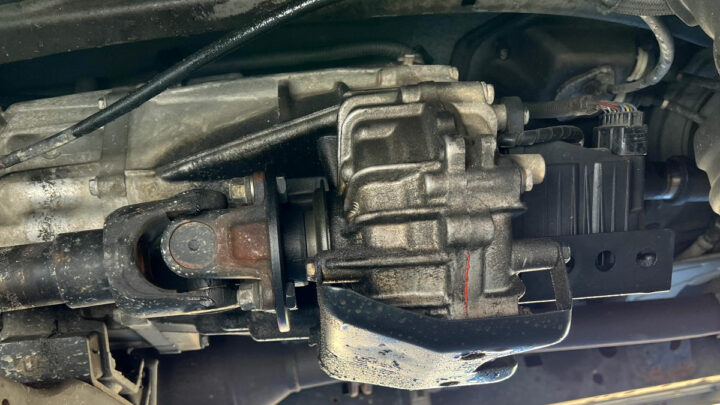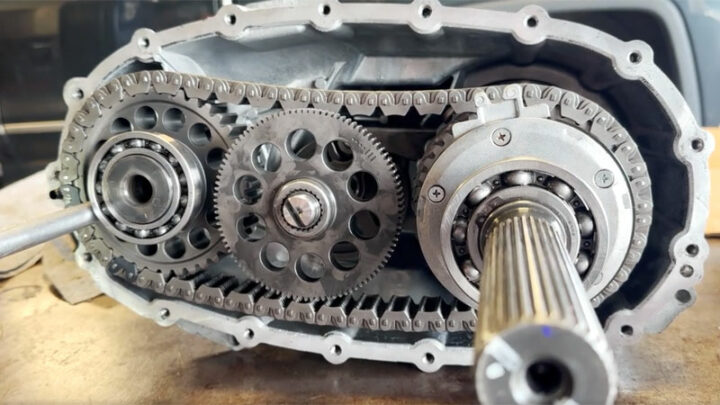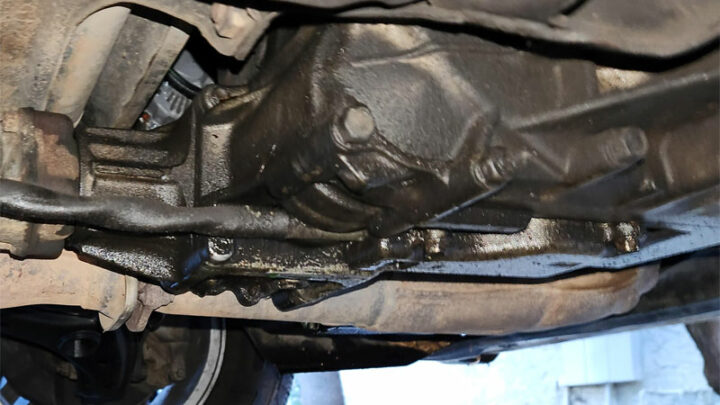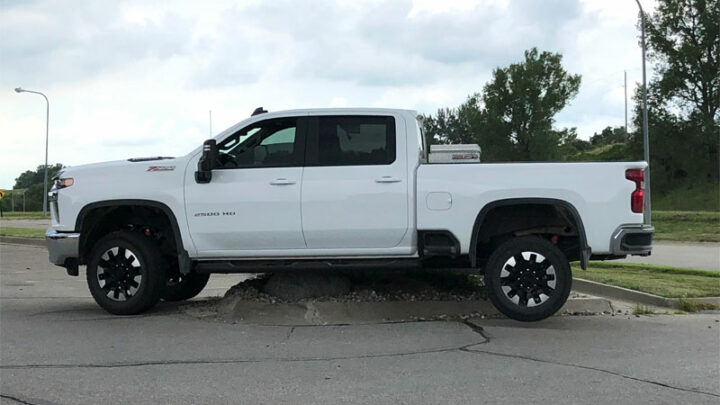4 Symptoms of a Bad Transfer Case (and Repair vs Replacement Costs)
Those who own a four-wheel drive vehicle are likely familiar with the importance of their vehicle’s transfer case. This sub-assembly is the heart of the four-wheel drive system and should be maintained as such.
But even despite proper maintenance, a vehicle’s transfer case can fail. Here’s how to recognize and address transfer case issues if they should arise.

See Also: 4 Types of Differentials (and How They Work)
What Is the Purpose of a Transfer Case?
A transfer case is a mechanical sub-assembly found within the driveline arrangement of Jeep, Ford, and Chevy four-wheel drive vehicles, among many others.
The primary mission of the transfer case is to divide power in the form of torque between a vehicle’s front and rear wheels when commanded to do so through mechanical or electrical input initiated by the vehicle’s driver.
Traditional transfer cases accomplished this feat through the use of various gearsets. Today’s modern transfer cases manage power/torque distribution through the use of gears driven off of a purpose-built drive chain.
When engaged, torque from the case’s input shaft is partially redirected to a separate output shaft that drives a vehicle’s front differential located along the foremost axle, thereby providing torque at all four wheel-end locations.

Related: What Does a Slip Yoke Eliminator Do?
Bad Transfer Case Symptoms
There are a number of symptoms that often accompany the failure of a vehicle’s transfer case, some of which generally prove to be more obvious than others. Recognizing these symptoms is the first step in making the diagnosis required to get yourself back on the road.
The following are several of the most common symptoms associated with transfer case failure.
#1 – Abnormal Noises

The failure of a transfer case is often accompanied by unexplainable humming or grinding noises that are especially prominent when four-wheel drive is engaged. It is extremely common for these noises to get increasingly louder as time passes.
#2 – Difficulties Shifting Into or Staying In 4WD
Another symptom of transfer case failure centers around issues with shifting into or staying in four-wheel drive. Alternatively, you might also find it difficult to shift between individual four-wheel drive ranges.
This symptom might also be accompanied by a noticeable grinding as transfer case actuation takes place.
#3 – Obvious Fluid Leakage

Another sign of transfer case issues involves obvious leakage found beneath the casing itself. Any transfer case fluid loss is cause for concern. However, the more prevalent a leak of this nature is, the more it should serve as an immediate cause for concern.
Significant leakage could even indicate a cracked or fractured transfer case housing.
#4 – 4WD Warning Lights
Many modern vehicles are prone to logging four-wheel drive-related faults, whenever transfer case issues arise. This typically results in the illumination of a “4WD Fault” light, or the display of a similar message on a vehicle’s dash.
When this occurs, further attempts at for-wheel drive usage should be discontinued until the system as a whole can be inspected, and any underlying issues can be diagnosed.
What Causes Transfer Case Failure?
A variety of factors can contribute to transfer case failure, with some causes being more common than others. The first step to preventing transfer case issues involves being able to understand the primary reasons behind their failure.
The following are several of the most frequently encountered causes of transfer case failure.
Low Fluid Levels
Low transfer case fluid levels caused by persistent leakage can serve as a death sentence for such sub-assemblies if it is not closely monitored and quickly repaired. When lubricating fluid within the transfer case dwindles, premature wear to the transfer case’s chain and gearset results.
Structural Damage

Another potential cause of transfer case failure is structural failure that can occur upon impact with underlying debris. This most commonly occurs in an off-road setting, and can be catastrophic, causing damage too significant to be adequately repaired.
But off-road damage isn’t the only type. There have been many instances where a vehicle is involved in an on-road accident (or due to an inattentive driver) where it runs over tall curbing, a landscaping boulder, or other solid object that is low enough for the vehicle to run over but tall enough to damage the transfer case.
Lack of Maintenance
Like any other mechanical sub-assembly, a transfer case requires periodic maintenance. This typically requires draining and refilling the unit’s lubricating fluid at factory-specified service intervals.
If this is not done as it should be, premature wear of components within the transfer case often occurs.
Transfer Case Repair vs Replacement

You should carefully consider whether to repair or replace a vehicle’s transfer case when troubles arise. Careful consideration of this type will prevent unnecessary expenditure, while also ensuring the best possible outcome.
Though the cost of individual repairs to a transfer case can vary significantly, there is a general median price associated with transfer case overhaul. This cost should be kept in mind when attempting to repair a damaged transfer case, as it is likely that a host of internal components are equally worn.
Therefore, overhaul is often your best bet when going this route. Generally speaking, you can expect to pay somewhere in the range of $500-$1,800 to have your transfer case repaired, with the latter number being more representative of an overhaul.
On the other hand, transfer case replacement can also prove to be quite expensive, though going this route makes sure that you are back to square one in terms of reliability, and also provides you with a warranty for additional peace of mind.
On average, expect to pay $2,500-$4,000 to have your vehicle’s transfer case replaced.
Related: Average Differential Repair Costs
Can a Bad Transfer Case Ruin a Transmission?
Though not an extremely common occurrence, the continued operation of a vehicle with a failing transfer case can lead to eventual transmission issues. This is due primarily to the increased strain placed upon the affected transmission and its internal components, as the result of transfer case failure.
Simply put, internal resistance and drag created within a faulty transfer case is magnified and imparted upon a vehicle’s transmission, by way of the transmission output/transfer case input connection.
